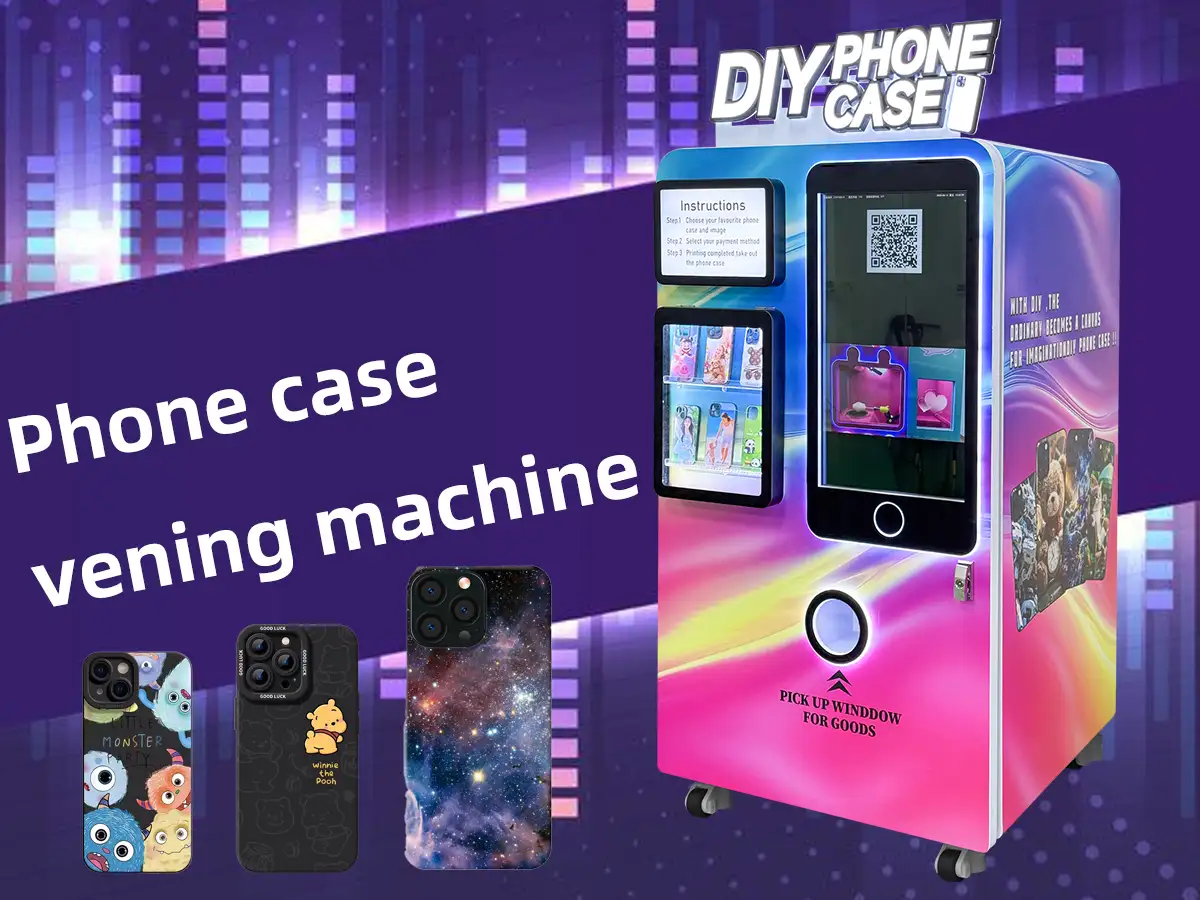Einführung
Die Getränkeindustrie, die Unterhaltungsbranche und der Einzelhandel nutzen Slush-Maschinen inzwischen als wichtige strategische Ressourcen. Kleine und mittelständische Unternehmen betrachten Slush-Maschinen jetzt als unverzichtbare Geräte für den Verkauf von Getränken mit hohen Gewinnspannen und schnellem Umsatz während der Sommersaison, nachdem sie zunächst in Fast-Food-Ketten und Kiosken aufgestellt wurden. Die Slush-Maschinen-Branche erlebt eine stille Revolution durch verändertes Kundenverhalten und Trends hin zu berührungslosen Verkaufssystemen und erlebnisorientiertem Einzelhandel.
Der Artikel bietet umfassende Einblicke in die Marktdynamik sowie in Produktinnovationen und Geschäftspotenziale, um Unternehmern und Betreibern eine fundierte Investitionsentscheidung zu ermöglichen.
Globaler und lokaler Marktüberblick
Global Slush Machine Markt Wachstum
Daten von Wirtschaftliche Forschung zeigt, dass der globale Markt für Slush-Maschinen ein kontinuierliches Wachstum erfahren hat, das in den letzten Jahren eine durchschnittliche jährliche Wachstumsrate (CAGR) von 5,7% erreichte. Sowohl der amerikanische Kontinent als auch der asiatisch-pazifische Raum (APAC) treiben das Marktwachstum durch die steigende Nachfrage nach Convenience-Getränken und erweiterten Selbstbedienungsoptionen an. Der Bedarf an Slush-Maschinen in Einkaufszentren und Vergnügungsparks sowie an Verkehrsknotenpunkten schafft Geschäftsmöglichkeiten sowohl für Hersteller als auch für Betreiber.

Trends bei Slush-Maschinen in China
Das Aufkommen neuartiger Teeläden und Milchteeketten sowie von Convenience Stores in China hat zu einer weit verbreiteten Einführung von Slush-Maschinen geführt. Die großen Tier-1-Städte nähern sich ihrer Marktgrenze, während die Tier-3- und Tier-4-Städte weiterhin ein außergewöhnliches Wachstumspotenzial aufweisen. Die ungenutzte Nachfrage und das wachsende verfügbare Einkommen in den Märkten der unteren Ebenen in Verbindung mit dem begrenzten Wettbewerb schaffen ausgezeichnete Möglichkeiten für eine Geschäftsexpansion.
Technologie- und Produktentwicklung
Intelligente, energieeffiziente Maschinen sind der neue Standard
Moderne kommerzielle Slush-Maschinen verfügen heute über fortschrittliche Funktionen, die über die einfachen Funktionen herkömmlicher Spender für gefrorene Getränke hinausgehen. Zu den wichtigsten Trends gehören:
Zu den modernen Merkmalen gehören die Selbstreinigungstechnologie sowie die automatische Einstellung von Temperatur und Luftfeuchtigkeit.
Modulare Tanks ermöglichen die gleichzeitige Freigabe verschiedener Geschmacksrichtungen aus Slush-Maschinen.
Die Geräte verfügen über Energiesparmodi und intelligente Ruhemodus-Einstellungen, um den Stromverbrauch bei geringem Bedarf zu senken.
Diese Innovationen führen zu einem geringeren Wartungs- und Arbeitsaufwand und sorgen für eine bessere Konsistenz der Getränke und eine längere Betriebszeit.

Innovation und Kosteneffizienz im Inland
Neue einheimische Hersteller mischen den Markt mit fortschrittlichen Funktionen zu erschwinglichen Preisen auf, obwohl die globalen Marken einen guten Ruf haben und technologisch ausgereift sind. Ein breiteres Spektrum von Menschen besitzt nun diese Produkte, während ländliche und kleinstädtische Märkte eine schnellere Akzeptanz erfahren haben. Lokale Marken stärken das Vertrauen der Betreiber durch ihre Anpassungsmöglichkeiten und lokalisierten Servicenetze.
Wichtige Anwendungsfälle & Gewinnmodelle
Hochfrequentierte Standorte & Self-Service-Integration
Slush-Maschinen sind an Orten mit hohem Besucheraufkommen wie Einkaufszentren und Kinos erfolgreich.
- Einkaufszentren
- Filmtheater
- Vergnügungsparks
- Bildungscampus
- Selbstbedienungs-Verkaufsstellen
Neue Verbraucher finden diese Geräte attraktiv, weil sie berührungslos zu bedienen sind und optisch ansprechende Displays haben, die ihren Wünschen nach schnellem Service und Hygiene entsprechen.
🖼 Vorgeschlagene Grafik: Montage von Anwendungsfällen mit Slush-Maschinen in verschiedenen Umgebungen
Rentabilität: Was können Sie erwarten?
Unter günstigen Bedingungen erreicht eine handelsübliche Slush-Maschine, die für jedes Getränk zwischen $3-$10 berechnet, nach 2-3 Monaten die Gewinnschwelle. Hier ist eine vereinfachte Aufschlüsselung:
- Erstinvestition: ~$5,000–$7,000
- Durchschnittlich täglich Tassen verkauft: 50
- Nettomarge pro Becher: $2-$9
- Monatlicher Nettogewinn: ~$3,000–$13,500
Standorte mit hohem saisonalen Verkehrsaufkommen sowie Cross-Selling-Möglichkeiten und die Integration von Getränken werden eine höhere Rentabilität aufweisen.
Marktherausforderungen und Risiken
Saisonalität und Sättigung
Slush-Maschinen sind von Natur aus saisonabhängig. An den meisten Standorten liegt die Hochsaison zwischen dem späten Frühjahr und dem Sommer, während die Wintermonate zu erheblichen Umsatzrückgängen führen. Die Betreiber verringern die saisonalen Auswirkungen, indem sie ihr Produktsortiment ändern, z. B. Heißgetränke oder Smoothies einführen und die Maschinen entsprechend der veränderten Nachfrage drehen.
Die Konkurrenz der Billiganbieter und die Marktsättigung in den Großstädten haben die Gewinnspannen gedrückt und es für die Marken schwierig gemacht, sich abzuheben.
Technische Wartung und Kundendienst Barrieren
Maschinen ohne zuverlässigen Support stehen vor einem ROI-Problem, da Ausfallzeiten und Wartungsprobleme auftreten. Zu den wichtigsten Herausforderungen gehören:
- Verspäteter Service oder Nichtverfügbarkeit von Ersatzteilen
- Anforderungen an Reinigung und Hygieneinsbesondere in Selbstbedienungsumgebungen
- Ausbildungskosten für Personal, das mit den Betriebsprotokollen nicht vertraut ist
Bei Investitionsentscheidungen sollten Maschinen, die über eine solide Nachkaufgarantie und einen lokalen technischen Support verfügen, ganz oben auf der Liste der Investoren stehen.
Häufig gestellte Fragen (FAQ)
F1: Ist eine kommerzielle Slush-Maschine eine gute Wahl für einen Erstunternehmer im Lebensmittelbereich?
A: Slush-Maschinen bieten neuen Lebensmittel- und Getränkeunternehmern, die in belebten Gegenden tätig sind und ihre Produkte auf den lokalen Geschmack abstimmen, Chancen mit geringem Risiko und hohen Margen.
F2: Worauf sollte ich bei der Auswahl einer Slush-Maschine achten?
A: Bei der Auswahl einer Slush-Maschine sollten Sie neben der Produktionskapazität auch die Wartungsfreundlichkeit, die Energiesparfunktionen und den Kundendienst berücksichtigen. Funktionen wie automatische Reinigungssysteme, Tanks mit mehreren Geschmacksrichtungen und eine intelligente Temperaturregelung sind heute unerlässlich.
F3: Sind Slush-Maschinen für unbeaufsichtigte oder Selbstbedienungs-Aufstellungen geeignet?
A: Ganz genau. Die heutigen Automaten verfügen über Selbstbedienungsfunktionen und sind mit einfachen Schnittstellen und Fernverwaltungssystemen ausgestattet. Diese Automaten eignen sich gut für die Aufstellung in Verkaufsräumen sowie in Kinosälen und auf Universitätsgeländen.
Schlussfolgerung
Gewerbliche Slush-Maschinen bieten Unternehmern eine schnelle finanzielle Rendite und betriebliche Anpassungsfähigkeit, da die Nachfrage der Verbraucher nach kalten Getränken steigt und die Erwartungen wachsen. Slush-Maschinen profitieren von intelligenter Technologie und vielfältigen Einsatzmöglichkeiten in Kombination mit einer kosteneffizienten Wirtschaftlichkeit, die sie für eine kontinuierliche Expansion positioniert. Um erfolgreich zu sein, müssen fundierte Standortentscheidungen getroffen werden, ebenso wie eine saisonale Planung und die Auswahl zuverlässiger Geräte, die einen dauerhaften Support bieten.
In der entsprechenden Umgebung kommerzielle Slush-Maschinen fungieren als leistungsstarke Umsatzgeneratoren, die über die einfache Ausgabe von gefrorenen Getränken hinausgehen.



